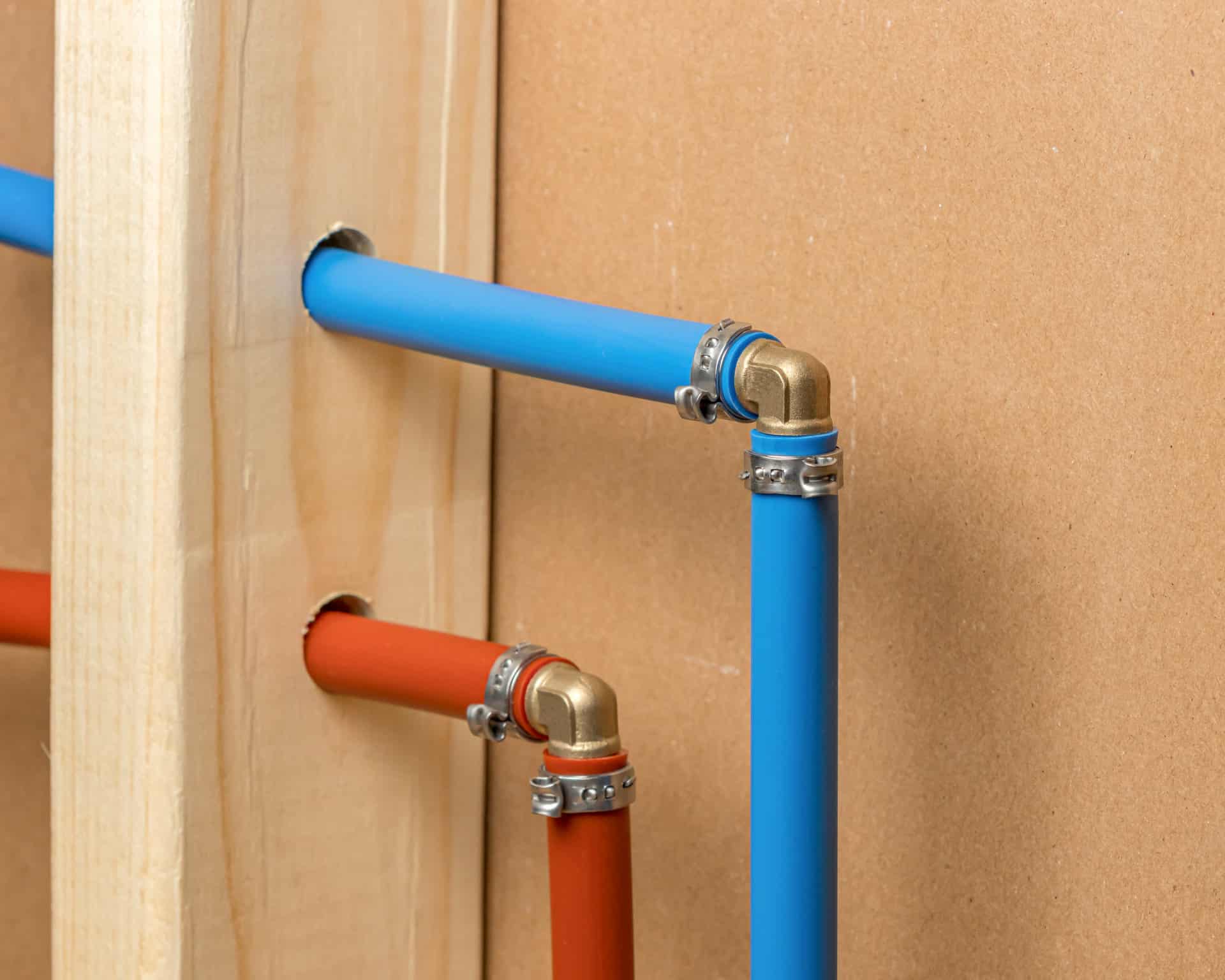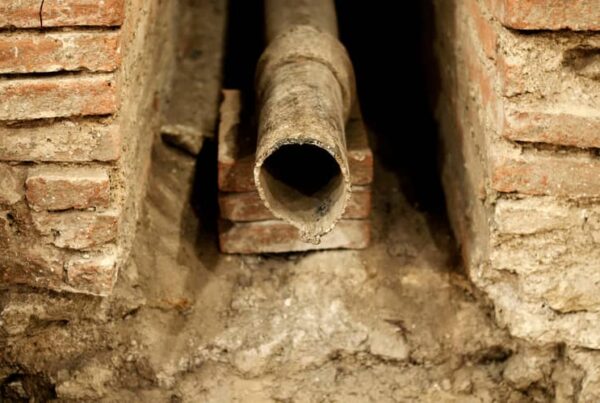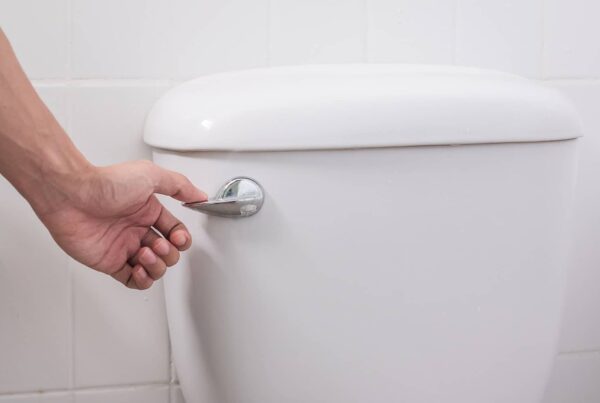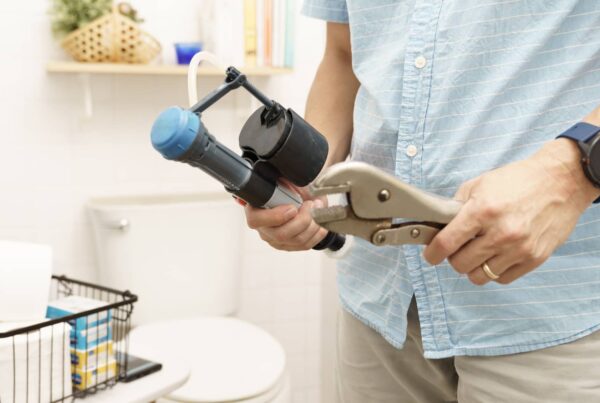
PEX is a cross-linked polyethylene material and is popular, along with copper, as a choice for piping in homes and for potable water. Problems with lead pipes and other materials led to many people choosing PEX over others. PEX has a lot of advantages such as 60% cheaper than copper for projects and it is flexible. Unfortunately, as with most things there are disadvantages.
What are the disadvantages of PEX plumbing? Since it is a plastic material, rodents seem to like to chew on it. Also, it can’t be used outdoors because it doesn’t like the UV rays or the cold weather, as well as it can’t be recycled (although you can paint the portions that are exposed to sunlight). Additionally, it cannot be connected directly to a water heater and must have a copper line to attach itself to.
Let’s take a look at why you need to know about these pipes, the advantages, the disadvantages, other options, maintenance, and when to call a professional.
Why Knowing About the Disadvantages of PEX Plumbing is Important
In life, we have a lot of choices to make. Some of them are related to our home, while others may be what we want to buy at the grocery store or what kind of car we want to drive. However, when it comes to piping inside the home, there are choices.
As mentioned earlier, the two most popular are copper and PEX. If you are looking for outdoor plumbing or worried about rodents getting a hold of your pipes, then PEX is not for you. We will discuss the advantages but also disadvantages of PEX plumbing and then you can decide for yourself what is best for you.
Advantages of PEX Plumbing
There are several advantages to PEX plumbing. Let’s take a look:
1. Adaptable and Easy to Use
It is a flexible material that can be used in long pipe runs, doesn’t require as many fittings as other pipes, and can make 90 degree turns without elbow fittings. It also has an advantage over rigid plumbing in that if there are freezing temperatures, then the pipes can expand and making it less likely to burst. Many new home construction and existing home contractors like this material to use. It can even be used in the exterior of a home that is cold if it has foam insulation wrapped around it.
2. PEX Connection is Easier
PEX can be connected easier than copper or PVC. While copper requires soldering and PVC requires glue, PEX uses a crimping tool.

3. PEX Has a Shut Off Valve and More Resistant to Chemicals
Another advantage of PEX is the material is less likely to corrode from a humid environment. Unlike copper, which can corrode in salty environments and eventually leak.
4. Lead Free and Can Be Used in Hot and Cold Water
Not only is PEX lead-free, but it has the ability to be used in hot and cold water. Other materials don’t always perform well in both temperatures of water. Additionally, it can have an adapter attached to it to connect to the existing copper or PVC pipe.

Disadvantages of PEX Plumbing
As the advantages outweigh the disadvantages, it is important to talk about these.
1. The Material Does Not Work Outside in Freezing Temperature Climates
PEX plumbing is fine inside the walls of a home, no matter the temperatures as it can be covered with insulation. However, one of the disadvantages of PEX plumbing is it cannot be used outdoors in cold climates as there is no way to cover them and protect them from freezing temperatures.
2. Rodents Like the Plastic Pipes
Depending on where you live, your neighborhood may have a rule that says you can’t use PEX pipes. This is often seen in rural areas or in cities as trash around the city can lead to a large number of rodents.
The rodents then look for ways into a home and often chew through pipes like these. The good thing is you can call a professional to get rid of rodents before they cause too much damage. This is something to think about if there is a problem in your area.
3. Some Pex Types Have Had Issues
It is not entirely confirmed yet, but some professionals do not like Pex as it too closely resembles polybutylene. Ultimately, Pex is still relatively new so it has some time to officially prove itself as reputable piping.

Other Options for Materials: Copper Pipes and CPVC
Copper and PEX are the two most popular materials for pipes, but ranking up there too is CPVC.
Here is a great video that compares Copper, PEX, and CPVC
Copper Pipes
Fifty to seventy years is a long time for pipes, but copper pipes can last that long, depending on the type of pipe. There are three types: Type K, L, M. Type L is used in residential homes and is more cost-effective than the other two. It has medium thickness and best for carrying drinking water. Also, it is highly recommended by plumbers and perfect for residential homes. Lastly, it also can last sometimes up to 100 years in ideal conditions.
There are two types of copper pipes:
Rigid Copper– this is a material that is used for the water supply in a house or building. It is cut into pieces and can be soldered together.
Flexible Copper Tubing – it is malleable, used in short runs, and is flexible.
Copper Versus PEX
Copper is different than PEX in that the pipe material can be recycled. However, the disadvantages are that it is expensive. This type of material costs about $285 for 100 feet of piping compared to PEX which is $30 per 100 feet. That is a big difference in price!
CPVC
Chlorinated Polyvinyl Chloride also known as CPVC is a lot like PVC except that CPVC is chlorinated and allows it to be able to deal with the extreme hot and cold temperatures that PVC cannot.
CPVC has a long life, is easy to use, and cheaper than copper at $1.24 per foot. It can also tolerate up to 200 degrees Fahrenheit for the temperature of the water. The only negative is it is not flexible like Pex.

Maintenance Around the House
We all spend a lot of time in our kitchen so when you are in there, check to see if there is a leaking kitchen sink drain. Often we don’t know unless we hear water or we reach under the sink and there is a puddle or the cleaning supplies are wet.
Check around the home for water leaks in the wall. If you see wet spots or mold or mildew or hear water running, you may have a water leak and need to call a professional.
Take a look at your homeowner’s inspection report to see what type of pipes you have. If they are polybutylene, then you need to replace the pipes. These will wear out quickly and cause leaks or they will burst.
Consult your water bill and check your yard for any signs of leaky pipes. Signs would be your bill is higher than usual, also that there may be cracked pavement or sinkholes.
Go over to your water heater and flush it every six months to make sure it stays clean. You will also want to adjust the temperature and reset.
When to Call a Professional
Call a professional if you have questions about the type of pipes to use, what kind you have in your home or any other issues. They know what will work well in the home. If you hire someone with experience and has the credentials, the pipes should be installed correctly.
Conclusion
Knowing about the piping in your home is important. You want to know what what you have or plan to get is appropriate for where you live. Talk to a professional for recommendations. Call Waypoint Property Inspection to inspect your home in Tampa, St. Petersburg, Lakeland, Orlando, Palm Beach, Ft. Lauderdale, and surrounding areas.



